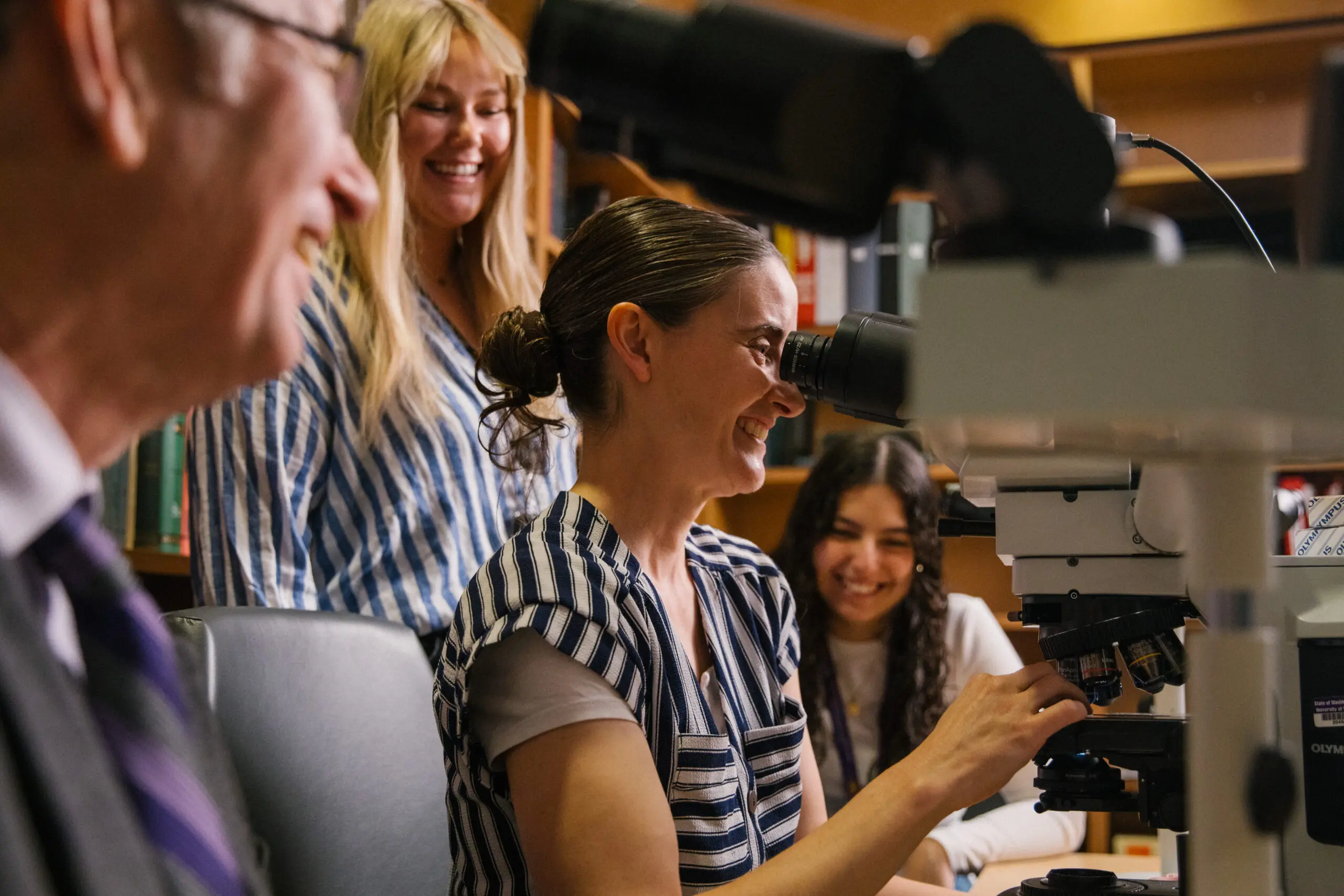Cancer therapies have come a long way in the last several decades. However, glioblastoma — one of the most fatal brain tumors — has stubbornly resisted treatment. Patients who receive a glioblastoma diagnosis rarely live longer than a few years.
Why has treatment for glioblastoma lagged behind? It’s a question that Anoop Patel, MD, UW assistant professor of neurological surgery at the UW School of Medicine, is trying to answer. Solving such a complex problem requires innovative researchers like Patel and brave funders who recognize the value of such work.
Re-examining assumptions about cancer
Patel’s research asks us to re-examine some of our most basic assumptions about cancer, such as the notion that all cancer is the same. “What we realized is that when we look at glioblastoma and we look at the individual cells within a patient’s tumor — it’s almost like each cell is its own cancer,” says Patel.
In other words, even within tumors, cancer cells are highly variable; each cell has its own unique characteristics and vulnerabilities — a concept called “intratumoral heterogeneity.” This makes finding a treatment all the more difficult, since each cell is likely to respond differently. Intratumoral heterogeneity is likely important in a lot of cancers, but it is particularly important in glioblastoma and a big reason why it’s so hard to treat.
Patel employs a “single-cell method” that aims to tackle this intratumoral heterogeneity problem by profiling each cell within a tumor. He uses complex mathematical and bioinformatic methods to identify each cell’s unique vulnerabilities. With this information, he knows which drugs are most likely to work on a cellular level, and he can then test potential therapies and piece together a treatment regime that treats the tumor as a whole.
No risk, no reward
There is no guarantee that a single-cell method will work when it comes to curing patients with glioblastoma or other cancers. So far, the research works in concept but has yet to be proven. It can be difficult for researchers to find funding for these proof-of-concept ideas from larger granting organizations such as the National Institutes of Health (NIH). Often, funders want guarantees that their investment will pay off down the road.
That’s why Patel is so grateful for the support from the Kuni Foundation. “A lot of the stuff we’re doing would be considered way too high risk for an NIH funding mechanism. The fact that the Kuni Foundation is willing to go out on a limb and take a risk on funding research that can be transformative — but needs that extra push to mature — is really remarkable,” says Patel. Already, with support from the Kuni Foundation, Patel has made progress tackling a big challenge for neurosurgeons: how to investigate brain tumor cells outside of the brain.
“When we take cells out of a patient and grow them in a dish, they’re not in a normal environment,” explains Patel. “They’re used to being in a brain where there’s a lot that supports their growth — growth factors and nutrients —things we can’t re-create very well in a dish.”
With an Imagination Grant from the Kuni Foundation, Patel has developed two new models that will allow him and others to study brain tumor cells in an environment more akin to the human brain and more specific to that patient. One model involves taking really thin slices of a patient’s brain tumor, which he can grow and culture for up to two weeks in the lab. Another model involves transplanting a patient’s tumor into mice. Patel and other researchers can use these models to test therapies that will actually work specifically for that patient.
The work from this smaller grant proved so fruitful, that the Kuni Foundation gave him a much larger three-year grant to pursue his single-cell research, with the hope that this will attract other sources of funding down the road — and ultimately save many lives.
The sky is the limit
“Dr. Patel’s work is a bullseye for the Kuni Foundation’s mission,” says Angela Hult, president of the Kuni Foundation. “His work is an exciting example of a bold, high-risk, high-reward approach that can propel the field of cancer research.”
The Kuni Foundation gave large grants to 13 projects at UW Medicine last year, with many centered on equity and the advancement of access, treatment and outcomes in cancer research and care for marginalized communities. In addition to closing the gap in cancer care disparities, another important part of the Kuni Foundation’s mission is to invest in scientists who advance cancer research in new and pioneering ways, including for rare and hard-to-treat cancers like glioblastoma.
The Kuni Foundation believes investing in Patel’s single-cell method could have far-reaching implications. “The nature of this insidious disease requires bold, audacious ideas and ways of working. Now more than ever we need to lean into the advancement of science, especially since discoveries in one area of medical research can advance progress in another,” says Hult.
Patel agrees. If he can show that the single-cell method for analyzing patient tumors works for glioblastoma patients — the sky is the limit. This method could be used to find successful treatments for other types of cancer as well.
Boldly leading the way
Patel acknowledges that our region is at the forefront of brain tumor research. It’s part of the reason he came here. UW Medicine is well positioned to take advantage of an incredible set of resources, both within our own institution and around our region.
The multidisciplinary expertise within UW Medicine’s Neurosciences Institute has made it the quaternary referral center for brain tumors for the entire West Coast and Pacific Rim. And within the larger community, there exists an extensive network of collaborators who are pushing the frontier of brain tumor research.
The fact that our region is uniquely positioned to tackle these tough questions is not lost on the Kuni Foundation. It’s a big reason why they support promising research in the area.
“It was clear that this foundation came from a family’s desire to support important efforts happening in the Northwest community, and to foster collaboration between institutions in the Pacific Northwest,” says Patel. “That’s what really stood out to me — their emphasis on supporting people locally.”
Certainly, one thing is clear: Defeating glioblastoma is a team effort. Real progress depends on innovative researchers like Patel taking risks and fearless private funders like the Kuni Foundation investing in promising ideas. Together, we could beat this deadly disease.
Written by Eleanor Licata

